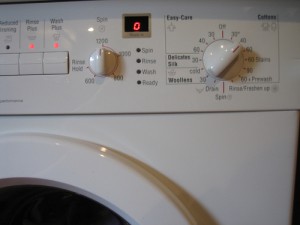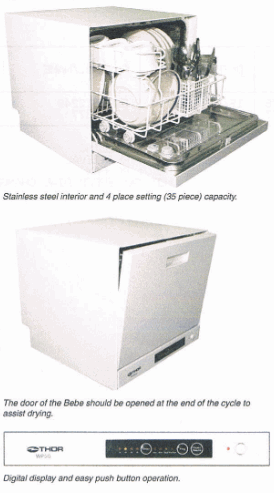Archive for News & Articles
We Do Bosch washing machine repairs in Sydney!
Headed out today to a north Sydney suburb to work on a Bosch washing machine that was “making a funny noise and wasn’t draining properly” – so my client told me!
When I arrived and performed my usual pre-service assessment, the client’s report was certainly correct – a funny noise indeed, but one I’d heard many times before – this was familiar territory!
Fortunately I had the required parts in the van, and a bit over an hour later the washing machine was all sorted and working perfectly again!
To book a washing machine service click here.
Are you concerned about how much using your dishwasher costs you? There are easy methods that you can use to reduce the amount of money that using your
Time is of the essence
The time of day that you use your dishwasher makes a difference. Power companies will often charge a higher rate for electricity during peak hours, which is usually the highest around 2pm.
Try using your dishwasher between 7pm and 12pm the next day to maximise your savings by washing dishes off peak. Check the peak times and rates with your electricity provider.
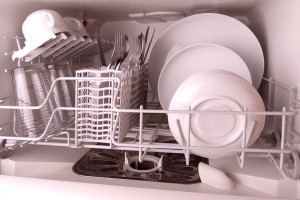 Choosing the right cycle to use
Choosing the right cycle to use
The different cycles on your dishwasher will use different amounts of electricity and water, which of course affects the cost overall. The heavier cycles will use more water as well as electricity as the dishwasher may be drained and filled four or five times during the cycle.
A normal or light wash will normally be appropriate for your dishes and these usually fill around three times each cycle.
Less heat can help you save
Approximately 80% of the energy used by a dishwasher is actually for heating the water especially if you have a model that uses a booster heater.
What you can do is reduce the heat on your hot water heater to 120 degrees from what is usually a factory setting of 140 degrees. This will help reduce your bill for hot water all the way around.
Try running appliances that use hot water simultaneously to maximise the use of your hot water heater.
Think about an upgrade
How old is your dishwasher? Older models, over ten years old, are nowhere near as efficient as newer models that have Energy Star ratings to give you an idea of the running cost.
When purchasing check the rating on the yellow sticker to make sure that you can maximise your energy usage and minimize the ongoing cost.
So if the worry about the cost of using a dishwasher has stopped you from using one you can think again, if you implement these ways of reducing costs the time that you save can be used to do the things that you enjoy doing rather than horrid household chores.
Oh and if you are concerned about the water that a dishwasher uses compared to washing dishes by hand the research on that is still out and they have decided that there are two many different factors that vary with each person to be able to call it either way.
Dishwashers are a great appliance, especially for busy families, that save a lot of time which is exactly what they are designed to do. By saving money on the cost of running your dishwasher you should be free to use it to make your life a whole lot easier.
For more information click here.
Washing machines are part of our daily lives and for most of us they have been a common household appliance since we were kids. But how do they really work?
We know that at the end of a cycle we end up with fresh smelling washing and all of the dirt has magically disappeared so lets have a quick look at how washing machines work on the inside.
The first step is the one that we are most familiar with and that is filling the washing machine with clothes or other laundry. Keeping colours and whites separate and taking care not to overload the washing machine because we then know that the clothes will not be washed properly.
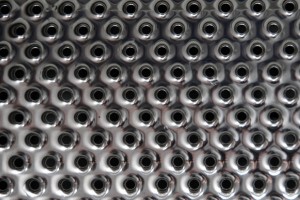 You close the lid and turn on the machine and it will fill with water until it is full and then what is called the agitator will stir the clothes, which is what actually washes them.
You close the lid and turn on the machine and it will fill with water until it is full and then what is called the agitator will stir the clothes, which is what actually washes them.
Then the soapy water is drained and fresh water fills the tub. This time the agitator’s job is to rinse the clothes and once this is done the machine is once again drained of water and it spins to remove as much water from the clothes as possible.
Now lets have a look inside to understand why a washing machine is so heavy.
What’s under the hood
One of the things that makes it so heavy is the concrete block that is in place to balance the heavy electric motor which in turn moves the extremely heavy gearbox which is fastened to the inner tub that is made of steel.
Many washing machines are extremely heavy because of the weight of their components.
Washing machines generally have two steel tubs with the one inside is where you put your clothes. It has the agitator positioned in the middle and it has perforated sides where the water exits as it spins.
The external or outer tub actually seals in the water and is fixed to the frame of the washing machine. The inner tub is instead attached to the gearbox so that it is free to move during the wash and spin cycles without colliding with the rest of the washing machine.
The support system
There are three pulleys inside a washing machine to keep it balanced. They ensure that if one side of the frame moves up then the other side will travel down.
The cable and pulley system holds to weight of the internal components and allows them to move so that the entire machine does not vibrate uncontrollably.
There is also an internal damping system that absorbs a portion of the vibrations through the use of friction.
The damping system
Each of the four corners of a washing machine contains a mechanism that is quite similar to a disc brake on a car and in fact the purpose is similar as well. This mechanise pushes two pads against a metal plate that is fixed to the frame of the washing machine which helps to control the amount of vibration when the machine is operating.
For more information click here.
If you do not do some simple maintenance there will come a day when you open the lid of your washing machine and it will smell and not in a nice way.
There are a number of reasons why washing machines smell and the man thing is to remove the smell before you wash your clothes otherwise they are not going to come out smelling clean.
Before we look at how to remove the smell lets have a quick look at why it is there in the first place.
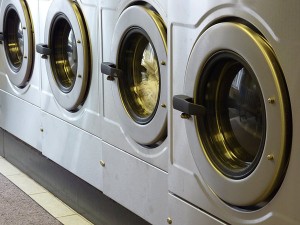 Why Washing Machines Smell Bad
Why Washing Machines Smell Bad
1. Overusing the detergent: The instructions on the box or bottle of laundry detergent will usually tell you to use an amount of detergent that is excessive for your needs. Too much detergent, especially liquid detergent can be the cause of an unpleasant odour in your washing machine.
The reason why their recommended amount is too much is that you probably don’t do a lot of washing loads with clothes that are very dirty. The average amount of detergent is 1 tablespoon to keep your clothes nice and clean.
You can actually test to see if too much detergent is the problem in your washing machine. Run a basic cycle without any clothes or detergent and if suds appear then try reducing your detergent.
2. If you use fabric softener: Sometimes when you use fabric softener, especially regularly, residue can build up on the outside of the outer tub. The smell comes from the mould and bacteria that forms as a result of this residue.
3. Using cold water to wash: Do you mostly wash your clothing in cold water? This may be the problem if you answered yes. Residue can build up inside the machine and cause a smell.
4. Unused washing machine: When you are going away or not planning to use your washing machine for a period of time, clean it before you do so that when you do use it again it should be free of nasty odours.
5. The drainpipe may be blocked: When the drainpipe for your washing machine becomes blocked less water is able to flow through which means that mould can build up causing it to smell.
Getting the smell out of your washing machine
1. Leave the door of the washing machine open: Air your washing machine out on a regular basis so it is more difficult for moulds and bacteria to form and cause the machine to smell.
2. Run a hot wash: This is especially for those of you that tend towards cold water washing. Every now and then do a cycle of washing with the hottest wash. It will help to break down the residue build-ups in the drainpipe as well as the washing machine itself.
3. Vinegar cuts through the smell: Run an empty washing cycle with a cup of vinegar in the machine.
4. Use some baking soda: Again run an empty cycle but instead of vinegar use a cup of baking soda, which will absorb the odours from the washing machine.
5. Swap to powdered soap: If you use liquid laundry detergent and you are consistently having a problem even when you reduce the amount that you use try swapping to a powder detergent to see if that helps with the issues that you are having.
6. Try cleaning the soap dispenser: If the washing machine soap dispenser becomes full of residue this can also cause a smell so make it a habit it to clean it regularly before the build up occurs.
For more information click here.
What we naturally do when the weather turns cold and wet and we want to get the clothes of our families dry is hang our clothes inside near heaters or in laundries in an attempt to get them dry.
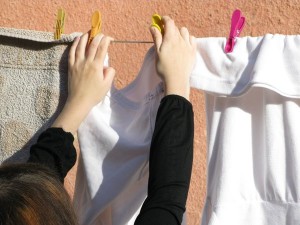 Often we try and avoid using a clothes dryer because we think that they will add to many dollar signs to our electricity bill but do you know that you could be harming your health and actually boosting your electric bill rather than saving money.
Often we try and avoid using a clothes dryer because we think that they will add to many dollar signs to our electricity bill but do you know that you could be harming your health and actually boosting your electric bill rather than saving money.
In fact researchers in the very cold and wet Scotland have completed research and they have found that hanging clothes up inside your house can be very bad for your health and the issues that they are referring to include asthma, hay fever and other allergies.
But even more than that the researchers are saying that drying laundry indoors has environmental, economic and health repercussions.
Drying clothes indoors encourages mould spores to grow and create the perfect condition for dust mites to thrive in.
They also said that if the clothes being dried have been washed in fabric softener then they could release cancer-causing chemicals into the air as they dry.
Often more energy is used because people tend to turn heaters up to assist with the clothes drying which adds to the fuel bill, it may be cheaper to use a clothes dryer and dry them safely and properly.
The ideal situation is to dry your clothes outside rather than inside and if inside is the only option that you have because of the weather then look at using a clothes dryer as the more economical and healthier option that looks after the best interests of you and your family.
For more information click here.
Cleaning the oven can be messy. Many of the oven cleaners that you can buy off the shelf at the local supermarket or hardware store are so nasty and messy that many of us would prefer to ignore the problem altogether.
But unfortunately this does not make the problem go away and in fact the longer that it is left the worse it is inclined to become.
Here is a different solution, some natural ways to clean your oven without the chemicals and the expense and the good thing is that you probably wont have to buy anything you could already have the ingredients in your home.
1. Making a paste with baking soda
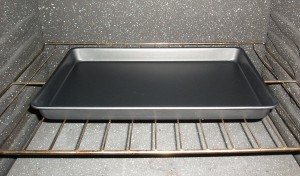 Baking soda is an extremely versatile ingredient and is very underrated when it comes to the things that it is useful for within the home. And one of these is cleaning the oven.
Baking soda is an extremely versatile ingredient and is very underrated when it comes to the things that it is useful for within the home. And one of these is cleaning the oven.
This is a very simple solution just mix water with a quantity of baking soda to form a paste that will stick to the oven.
Then cover the oven with the paste and leave it there overnight to work away at the baked on gunk and grime.
The next day just use a wet sponge to wipe the mixture away and what was the baked on mess should come off at the same time.
2. Adding soap to baking powder
This is another method of cleaning your oven naturally that uses baking soda as a base. The first thing you do is lightly sprinkle the dry baking soda on the floor of the oven.
Mix a quarter cup of vinegar with three teaspoons of borax , add one eighth of a cup of dishwashing liquid and finally two cups of boiling water.
Mix it together and add it all to a spray bottle and spray it onto the baking soda already in the oven.
Again leave it in the oven overnight and wipe it with a wet sponge the next day to clean.
3. Essential oils help clean the oven
This method also uses baking soda. Get a box of baking soda, mix in half a cup of salt, a quarter of a cup of borax, a cup of water, three quarters of a cup of white vinegar, 10 drops of thyme and lemon essential oils combined.
Make a paste from the borax, salt, baking soda and water. Remove the racks from the oven and heat it up to 250 degrees.
Turn the oven once it has heated and carefully, you don’t want to burn yourself, spread the paste onto all of the surfaces in the oven.
It will take approximately 20 minutes to set.
Mix the vinegar and essential oils in a spray bottle and spray the paste that is hard with the contents.
Again you can wipe it afterwards with a wet sponge.
For more information click here.
The reason that we have a dishwasher in our homes is just so we don’t have to do dirty dishes and can free up our time to do something way more interesting.
But when the dishwasher stops draining water and refuses to work do you know what to do?
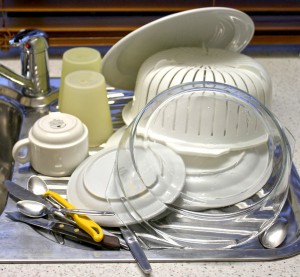 One of the ways to avoid this issue occuring is to have your dishwasher properly serviced and maintained by an expert, and preferably on a regular basis, you are less likely to have any problems if you ensure that your dishwasher is in top working condition at all times.
One of the ways to avoid this issue occuring is to have your dishwasher properly serviced and maintained by an expert, and preferably on a regular basis, you are less likely to have any problems if you ensure that your dishwasher is in top working condition at all times.
However you cannot prevent every issue and there are a few things that you can do if you discover that your dishwasher has stopped draining to limp through before you call in the professionals.
There are selected brands of dishwashers that need to have just a small amount of water in the bottom of the washer whilst there are others that don’t have this requirement. The dishwashers that do need this amount of water need it to keep moisture in the pump module and to stop the seal of the pump becoming dry.
The way that you can tell if there is a problem with the drainage of your washing machine is that if the level of the water is higher than the pump module then there is definitely a problem.
So what can you do when you find that there is a problem with your dishwasher and it is not fully draining? Well there are a few steps that you can work throough before making that professional call:
- A dishwasher will not drain if the door isnt securely shut and latched – check and see if it is properly closed.
- Most dishwashers will have a cancel/drain button, depress this to see if you can manually encourage it to use a drain cycle to empty.
- You can turn off the supply of water, remove the drain hose. You can tap the plug lightly with a screwdriver and hammer and then replace the drain hose and turn the water back on
- Is there an obstruction or kink in the drain hose? This could be the cause of the problem.
- If the loop of the drain hose is more than 20 inches off the floor you could experience problems. Disconnect the hose and reloop it not far from the floor and reconnect it.
- Make sure that there are no faults in the drain hose
- The drain hose needs to be less than 12 feet long to work efficiently
For more information please click here.
What clothes dryer will suit your family? There are so many features that are attached to most clothes dryers these days that it can be difficult to know which one will suit your family the best.
Types of Clothes Dryers
When it comes to the basics there are really only two types of clothes dryers those driven by electricity and those driven by gas.
Gas tends to be a little more expensive to purchase in the first place but apparently you will recoup this difference in cost within the first year of use because the gas models cost less to run in the long term.
Before you purchase ask yourself:
1. How frequently do I use a dryer and what sort of clothes do I usually wash?
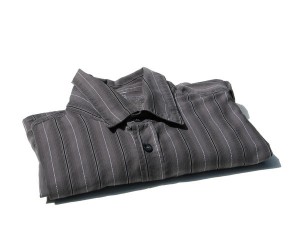 This is the difference between a lightweight model and one that can take a beating. If you have a large family and dry on a regular basis clothes like work clothes, jeans and overalls then maybe you will need to look at a heavy-duty clothes dryer.
This is the difference between a lightweight model and one that can take a beating. If you have a large family and dry on a regular basis clothes like work clothes, jeans and overalls then maybe you will need to look at a heavy-duty clothes dryer.
This will also determine the different features that you may want to have on the dryer to make life a whole lot easier and to protect your clothes.
2. What is the environment like where the clothes dryer will be installed?
Look at the space where the clothes dryer will be installed. Is it necessary to have a lit console because it is in a dimly lit area? Consider what other features that may be useful to have that will help within the space that you will be using.
3. The available features
- Moisture sensors: that stop the dryer when they sense that the clothes are dry
- Extended tumbling: allows tumbling for a maximum of three hours without heat and is designed to reduce wrinkling
- Steam refresh: can be used on clothes forgotten in the dryer to remove wrinkles using steam
- Favourite cycles: store your favourite cycles for one button convenience
- Reverse tumbling: reduces clothes tangling by reversing at particular points in the cycle
- Safety locks: stop children from accessing the clothes dryer controls
- Removable drying racks: add to your clothes dryer when drying things like runners
4. Types of controls
Before purchasing have a look at the controls and see if they are easy to use and reach, especially if you are the primary person to be accessing them. You will generally have a choice of the types of controls – sometimes electronics can be more expensive to replace if there is an issue.
To get our assistance with see further details here.
Clothes that are covered in lint when you take them out of the clothes dryer look awful and especially when it is one of your favourites because lint no matter what you do tends to cling stubbornly to your clothes no matter what you do to remove it.
Clothes dryers are supposed to remove any lint that is left over from the washing cycle do why is it that most of the time the dryer adds more instead of removing it?
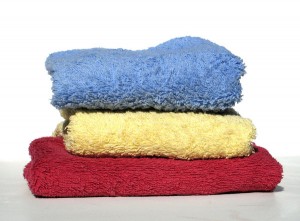 We know that many of you struggle with this problem so here are some helpful hints to deal with your annoying clothes dryer lint problem:
We know that many of you struggle with this problem so here are some helpful hints to deal with your annoying clothes dryer lint problem:
- Hint number one is to make sure that your clothes are at least damp when you load them into the clothes dryer. And if they have been sitting around wet for a day or two you may want to consider rewashing them before putting them into the dryer
- Turn any dark items of clothing inside out and this will minimise the lint that can be seen when you wear the item. This also works for any maybe fuzzy or other clothes that generate a ton of lint
- Dryer sheets are a great way to reduce the amount of lint that will attach itself to your clothing because they stop the build up of static electricity in the clothes dryer
- Always use the dryer reccommendations on your clothes you can usually find out what this is from the label
- Regularly clean out the lint filter, make a habit of doing this after every load because this is a guaranteed way of reducing the lint that can cling to your clothes
- Check pockets before you dry the last thing you want is something like a shredded tissue making its way through the whole load.
Lets face it our clothes dryers are pretty important appliances especially in the colder months of the year.
We need to use them to get our clothes dry as they will never dry if we hang them outdoors. And when they get hung on racks around the place they gather all kinds of nasty household smells and need to be washed again if you don’t want to go out smelling like uncle Charlie’s cigarette.
So if you want to reduce the amount of lint that adorns you freshly washed and dried clothes follow these handy tips to make your life a little bit easier.
Click here to find out more: http://www.aservices.com.au/
Here at Affordable Services, we are pleased to announce the introduction of a fantastic little product that we know you will love!
This great little dishwasher is perfect for renters, as it is not a permanent fixture to your home, and if you purchase the optional tap fixture that plugs straight onto your kitchen tap, you won’t even need to plumb it in!
The Thor Bebe is incredibly versatile, has a delay start timer so that you can make the most out of off-peak electricity, and provides outstanding performance with its four wash cycles and two temperature settings.
Our Affordable Services company focuses on servicing your existing appliances, not selling new products… until now!
We have chosen to stock the Thor Bebe WP5G, because it is a product that we believe in.
Call us or just drop in to see this great little dishwasher for yourself.
